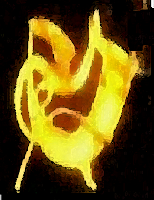“The noblest mind the best contentment has.”
The Faerie Queene
Introduction
In spite of the variety and beauty of his shorter poems, The Faerie Queene( 1609) is by far the most important of Spenser’s works. “Virgil without the Aeneid, Milton without Paradise Lost ------ would still rank as the great poets”, C.S. Lewis observed “whereas Spenser’s reputation is almost entirely dependent on the Faerie Queene”
Purpose and Structure
In his educatory letter to sir Walter Raleigh , Spenser explains that his book is 'continued allegory or dark conceit ' of which the general purpose is to fashion a gentle man or noble person in virtuous and gentle discipline '. These were to be twelve books , each book to deal with the adventures of a particular knight , who was to represent some Virtue, He has chosen king Arthur as his epic hero and in his person represents 'magnificence ' as being the perfection of all the virtues , and makes twelve other Knights the 'patroness ' of the twelve other virtues.The Narrative
 The poem plunges in Medias res and speaker himself explains that if a historian had represented the events of the poem chronologically, the starting point would have been what was to occur in the twelfth and the last book (incomplete) of his poem. This was to show the Faerie Queene keeping her annual twelve - day feast and on each day, being affected by a disastrous dragon a distressed person appears to the Queene unexpectedly for help. The Queene also sends each day a heroic knight to right the wrong and to let the oppressed go free.
The poem plunges in Medias res and speaker himself explains that if a historian had represented the events of the poem chronologically, the starting point would have been what was to occur in the twelfth and the last book (incomplete) of his poem. This was to show the Faerie Queene keeping her annual twelve - day feast and on each day, being affected by a disastrous dragon a distressed person appears to the Queene unexpectedly for help. The Queene also sends each day a heroic knight to right the wrong and to let the oppressed go free.Writing Style and Influence
For The Faerie Queene, Spenser introduced a new verse form known as the Spenserian stanza, which became associated with his work. This verse form consists of nine lines, with the first eight lines written in iambic pentameter and the final line in iambic hexameter (also known as an Alexandrine). Spenser's innovative use of this stanza contributed to the distinctiveness and influence of his poem.
Conclusion
Edmund Spenser's The Faerie Queene stands as his magnum opus, surpassing his other poems in significance and reputation. Its moral purposes revolve around educating and shaping a noble individual through virtuous discipline. While incomplete, the six completed books demonstrate Spenser's mastery of allegory, his narrative skill, and the introduction of the renowned Spenserian stanza.
Answer These Questions:
1. What is a Spenserian stanza?
2. Is the statement true or false: “Spenser originally planned the poem to consist of 12 books, each made up of 12 cantos; he completed only 6 books, however.”
3. Who is “Forsaken Truth”?
4. What is called an allegory?
References
1. The Faerie queene : Spenser, Edmund, 1552?-1599 : Free Download, Borrow, and Streaming : Internet Archive. (n.d.). Internet Archive. https://archive.org/details/faeriequeene02spen

Comments
Post a Comment
Drop any query, suggestion or comment here.